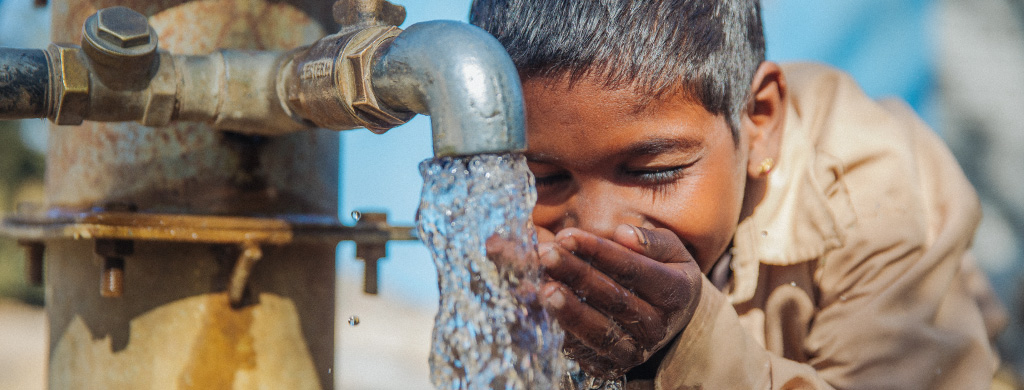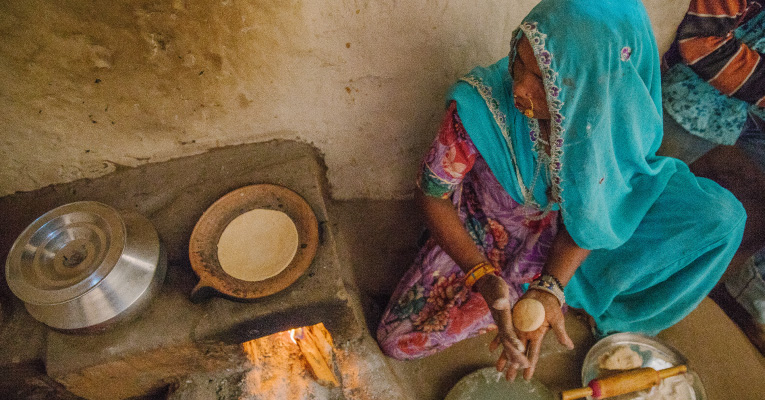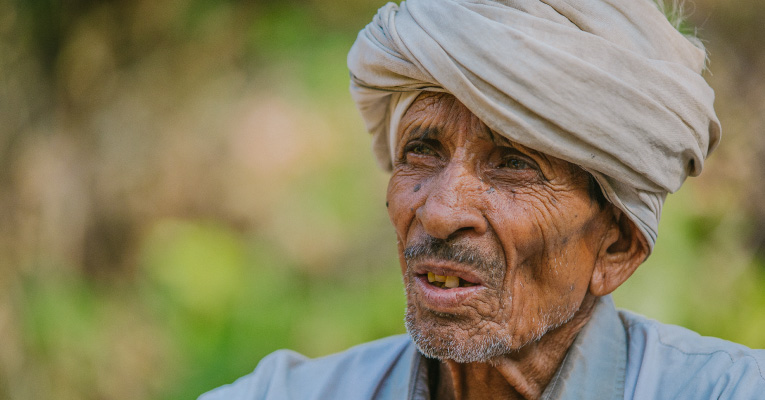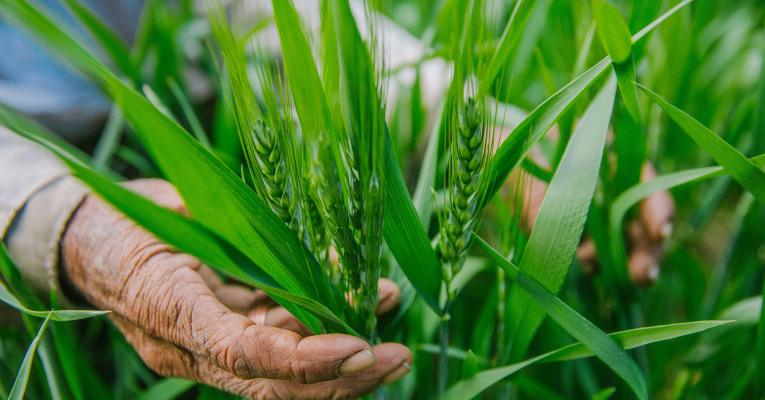For the last few years, we’ve partnered with ME to WE to develop clean water initiatives in developing communities in Kenya. This year, we’re proud to be expanding our impacts to India – known as one of the world’s main producers of tea and spice. It also happens to be the second most populated country on the planet, with many communities struggling to have access to clean water and basic care.
Not only essential for drinking, access to clean water also reduces illness and leads to better agriculture and food access for entire communities. Our partnership with ME to WE is currently helping seven new communities in India, with every 50 g/2 oz purchase of our ME to WE teas providing 2 weeks of clean water to a person in need.
So how exactly are these water initiatives changing people’s lives? We journeyed to Rajasthan, India to meet some of the people WE Charity has helped in recent years.
The best toilets in town
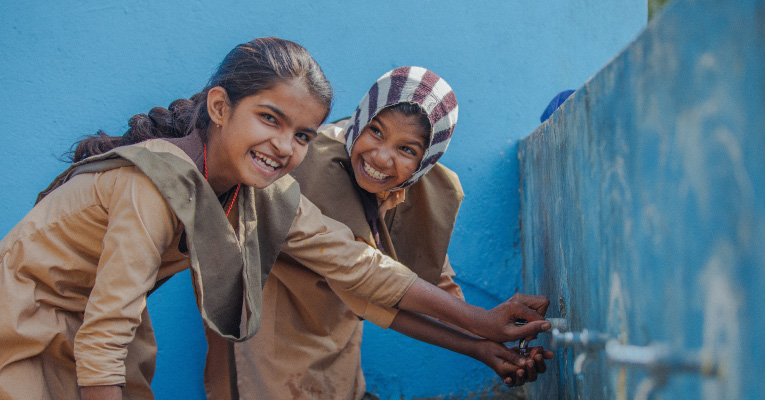
How simple plumbing solutions increased the rate of girls’ education in rural India
Toilets. It’s often a given that you’ll find them when needed. For girls in rural India, a trip to relieve themselves can be humiliating and disrupt their studies.
“I had to leave the classroom and go behind the building,” said one girl at the primary school in Kalthana, a far-flung village in India’s northern province of Rajasthan. Like many schools here, they only had a toilet block: a set of open-air urinal stalls, relying on simple partitions to separate holes in the floor. To get privacy, girls had to walk far from the classroom, which means they missed significant portions of class.
India has the highest population without access to toilets in the world. There’s a risk of harassment or assault when girls are in search of privacy, so they may choose to stay home for safety reasons or to keep their dignity during menstruation.
In 2014, WE came in to provide the school with a functional water system that didn’t rely on electricity, producing the first running water in the history of the village. Flush toilets were also installed, with separate facilities for boys and girls, and a handwashing station.
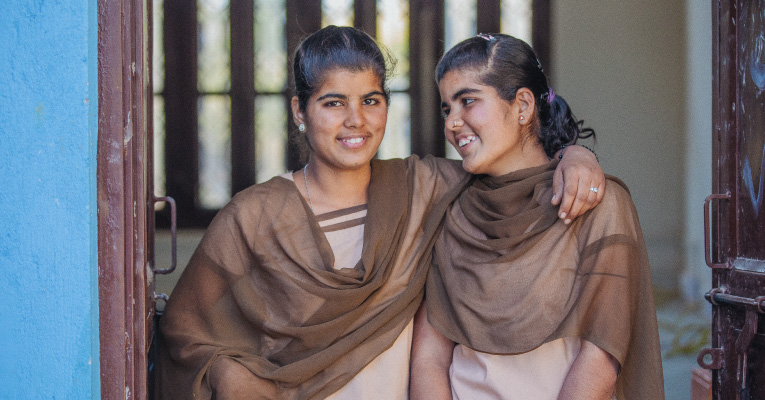
17-year-old twins Greeta and Seeta attend neighboring Verdara Senior Secondary School. Attendance for girls in secondary schools is much lower in India compared to boys, with dropout rates jumping after puberty. Girls can miss a full week of school when they get their periods to avoid a hike to the bushes out back.
“Ashamed” is the word Geeta uses to describe using the run-down toilet that was at their disposal, meant for both girls and boys but avoided by many. “We had to go outside,” adds Seeta, “For that reason, many girls didn’t come. Their parents wouldn’t let them.”
That was before.
Verdara has a shiny new set-up of separate girls and boys toilet blocks with flushing toilets and a communal handwashing station. WE Charity had come in to update the plumbing and build the blocks, along with three new classrooms. 30 solar panels are currently being mounted on the roof and will soon have the school running on green energy.
With the arrival of flush toilets and privacy, Geeta and Seeta took it upon themselves to deliver public service announcements. They visited two of their girlfriends’ homes and approached the parents. “We said, ‘there is nothing to worry now. You can send your daughter to school,’” Geeta says. And they did.
In two years, Geeta and Seeta will graduate from Verdara. The girls have plans to go to college and become teachers or doctors – or an engineer, says Seeta, if she does well enough in math.
The ripple effect
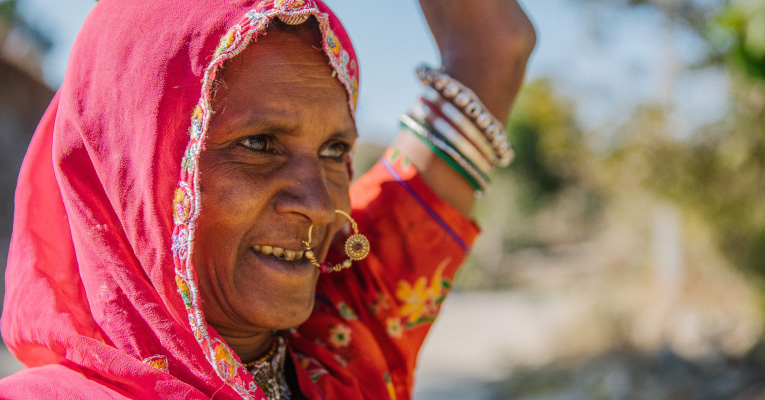
In rural India, women raise awareness about waterborne illness to lead a clean water revolution.
Meet Ramba Bai. Every day, for 45 years now, she’s lifted two clay pots on her head and walked to fill them at the village well. Ramba’s family of seven needs a lot of water. She goes to fill her pots eight times a day. “I use the water for my goats, for my oxen, for drinking, for bathing, for washing my clothes,” she says.
WE Charity is currently working on a program to combat waterborne illnesses and improve health. The major hurdle? To convince skeptical women like Ramba to add a step to the process: boil the water before drinking.
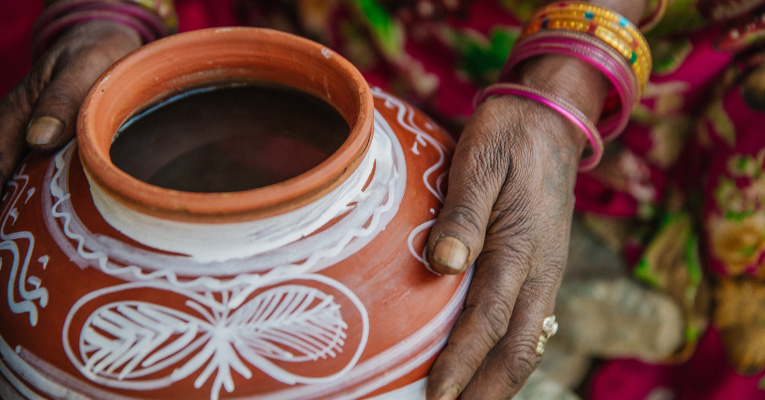
Ramba’s family had been getting sick, but didn’t know it could be from their water source. Here, what the locals call “swargh” – Mewari for “heaviness” – a catchall term for a variety of gastrointestinal problems like loss of appetite, fevers and chronic stomachaches. Heaviness is a universal symptom, and can often be traced back to a number of waterborne diseases like jaundice and typhoid, which can spread through bacteria in water sources.
Rajasthan is a desert province. Without plumbing or stores, communities rely on natural bodies of water – mainly groundwater wells. WE Charity assisted the community to deepen their well, therefore the water supply, especially in the summer months when the rain stops.
Two years later, Ramba’s been boiling her family’s drinking water, with clear health benefits. “Clean water helps my family have a normal, happy life,” Ramba explains. To make the boiling process easier, Ramba installed a smokeless chimney or “chulha” in her home. In her community, most cooking is done over open fires in homes without chimneys, making boiling water a chore that threatens lungs with smoke. Ramba’s the first woman in her community to use the smokeless chimney and is now an advocate, telling her friends to convert. Word is spreading.
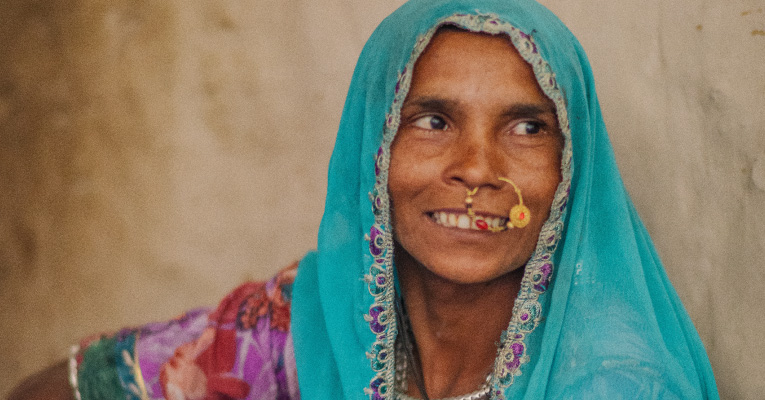
Lerki Bai, 35, is from the nearby village. She lives in a house with two other families and raises goats. She didn’t want a chimney, and thought needing to boil water was an additional job. “I said it was too big. My old stove is small, only one burner,” she says. “This would be extra work for me.’’
Lerki’s family suffered many ailments. Her husband, Naring, made regular visits to the doctor – a 15-kilometer trip each way – and often paid for medicine to soothe an upset stomach. The smoke from cooking caused many other problems. “Our eyes burned. The walls were black,” she says. “Utensils were black. Our lungs filled with smoke.” Curious, Lerki attended one of WE’s health seminars. Afterwards, she installed a smokeless chimney.
“When I first used the smokeless chulha and saw the walls were not black, I knew this stove was better,” she says. “There is no dark black smoke in the house.” Her family’s health immediately improved. Her husband no longer goes to town to pay for medicine.
A smokeless chulha is big, but essential. Lerki can boil water and cook at the same time, using the same amount of firewood. WE Charity’s smokeless chulha program started in the region in 2014 – 700 chimneys have since been installed in 700 homes here for free. With an average of four-member households, that’s 2,800 people breathing clean air while they cook. It’s soon to be more.
“I tell all of my friends to try a new stove and to boil water,” says Lerki. They will in turn tell their friends, improving health for their own families.
A Desert Oasis
Technology and blind faith help bring water to smallhold farmers in a desert province.
85-year-old Kharta Ram is perched on the edge of a well. He’s the fifth generation to farm in the rural village of Verdara, where he helped his father dig the well by hand as a boy. After decades flooding fields for irrigation, the well ran dry. Crops that fed dozens of farmers’ families failed.
WE Charity heard they were struggling, and proposed a solution involving exploding dynamite and heavy machinery to haul out the well’s insides, breaking new water veins in the rock. This would increase the well’s depth and the water’s recharge rate. “The farmers were afraid,” Kharta remembers. He and the others faced a choice: watch the well deplete, or call in the machines and blow up their very means of survival, in the hopes of getting more water.
Rajasthan has 10% of India’s land mass, but only 1.1% of the country’s surface water. It’s a desert state of extremes, where monsoon rains abruptly flood fields after summer’s dry heat. Residents are almost completely dependent on wells and boreholes that draw water from the earth when it doesn’t fall from the sky. Just two years ago, the province suffered a drinking water crisis.
This was a big problem in small tribal communities like Kharta’s. The men on these plots are subsistence farmers, meaning they sow just enough to eat, without a surplus to sell. They need water to drink, and they need water to grow their primary food supply.
Originally dug by farmers who wanted settle on the land, the well is a pillar of the village. The men had dug for one year, enough for a continual supply of groundwater that would irrigate their land. They planted corn in the summer and wheat in the winter. Their prayers had been answered – sort of. Summer after summer came, and the water level dropped.
In 2014, WE Charity proposed to bring in equipment, hire machine operators, and fund the project, but all 15 farmers had to consent and help with manual labour because community contribution ensures long-term sustainability.
“Even when the work was half completed, I didn’t have faith,” Kharta admits. It was only when the well was completed that his faith was restored. Water capacity and replenishment rate increased almost immediately. Crop yields multiplied, and a whole new planting season was also added with soy and green gram. “My family has enough food, and we are healthy. Whatever we want to grow, we can grow.” Since reconstruction, the well has never run dry, even in the summer.

